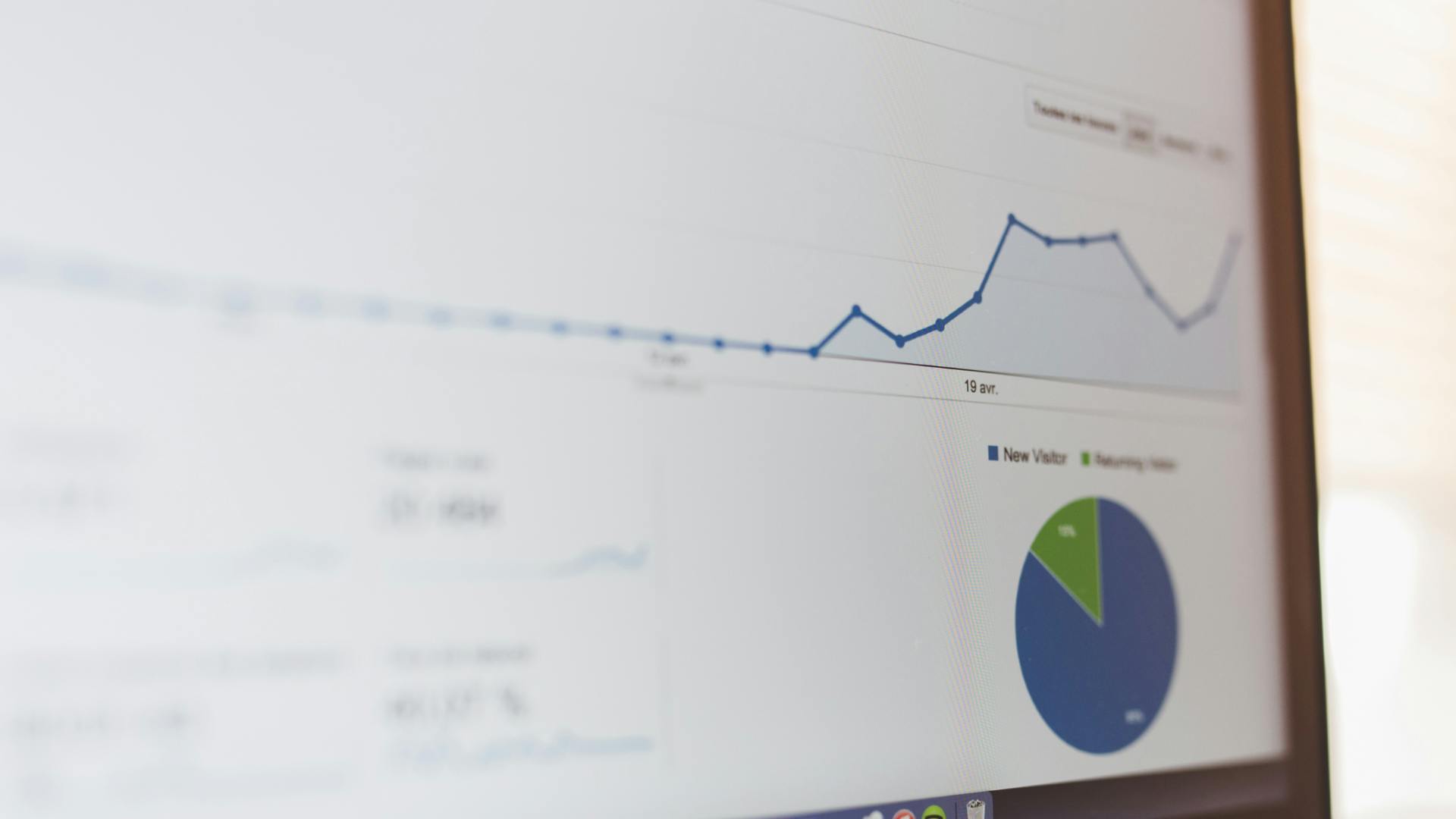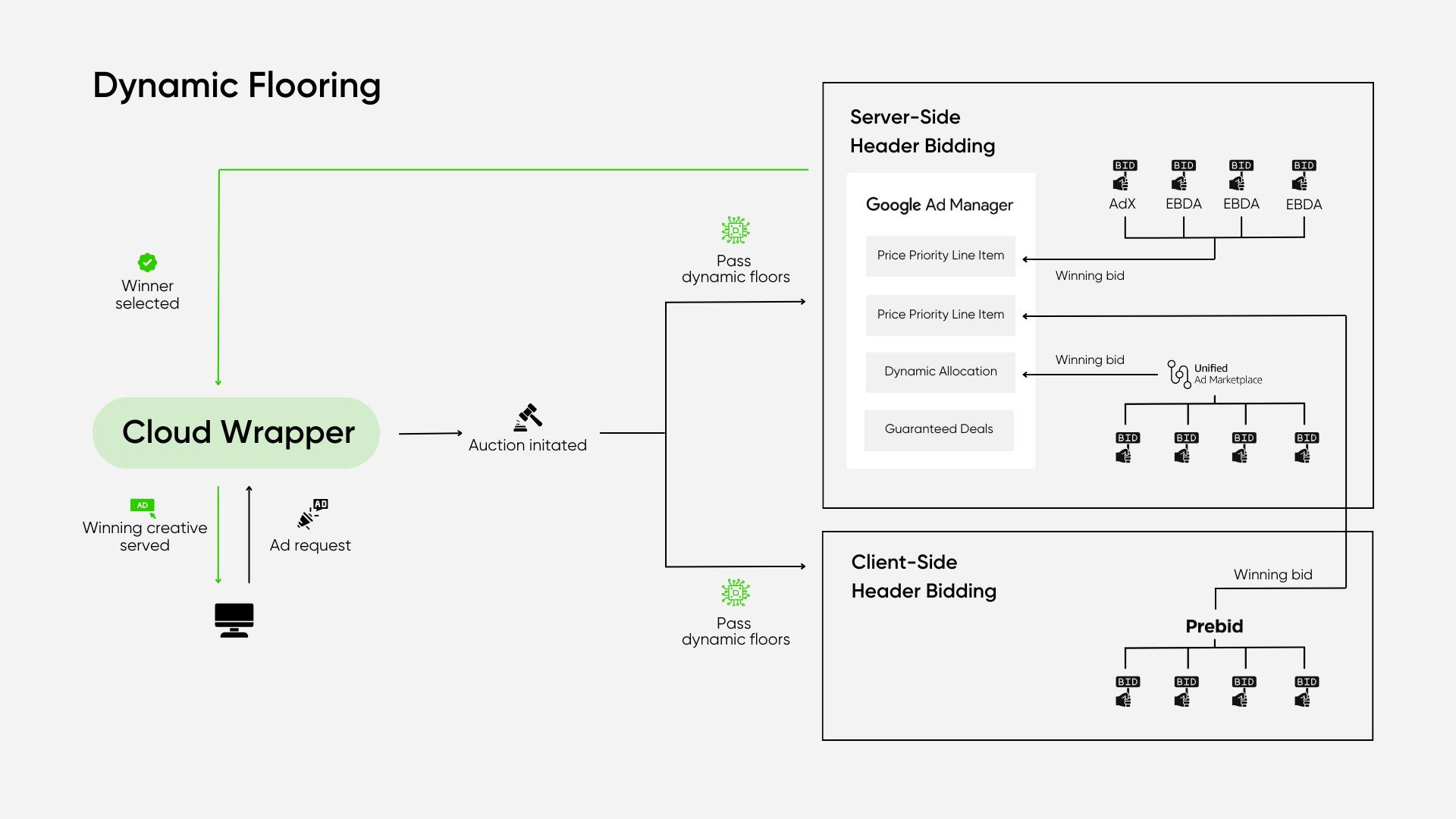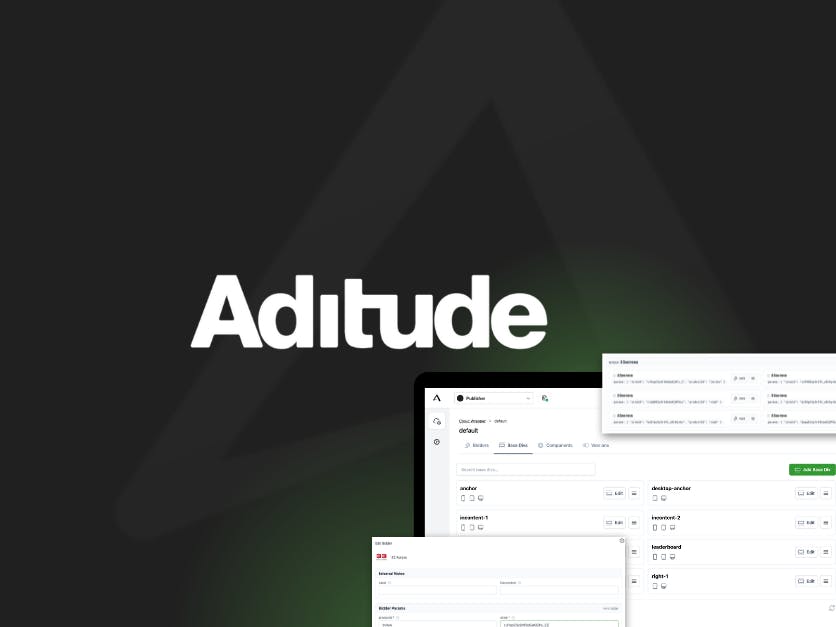Guide to Dynamic Floor Pricing: What, Why and How
Learn about the difference between soft and hard floors, debunk misconceptions, and discover the transformative benefits for publishers. Plus, find out how to get started with dynamic pricing and maximize revenue with Aditude's seamless integration.

As we all know, publishers constantly seek innovative strategies to maximize their programmatic monetization and overall ad revenue. Among the myriad of tools and techniques available, dynamic floor pricing or dynamic pricing emerges as a game-changer, offering publishers unparalleled control and flexibility in optimizing floor pricing strategies.
Let’s explore the world of dynamic floor pricing, its intricacies, benefits, and transformative impact.
What is Dynamic Floor Pricing?
Traditionally, publishers have relied on static floors to set minimum bids for their ad inventory. However, static floors have their limitations. Set at fixed minimum bids, static floors fail to capture the dynamic nature of market demand and audience engagement. This often results in missed revenue opportunities or undervalued impressions.
The are two types of static flooring:
- Hard floor: A hard floor represents a fixed minimum price set by publishers or their ad ops solution for their ad inventory. This minimum price remains unchanged unless manually adjusted by the publisher or solution. Hard floors provide a level of certainty and stability in pricing but may lead to missed revenue opportunities or undervalued impressions, as they do not account for fluctuations in market demand or audience engagement.
- Soft floor: Soft floors are more of a threshold that publishers can set to capture what would otherwise be missed opportunities, especially when bids that may come in are only slightly less than the hard floor.
Dynamic floor pricing, on the other hand, represents a paradigm shift in ad optimization. By leveraging advanced technology and data intelligence, dynamic pricing adjusts price floors in real time based on market demand, audience behavior, and other relevant factors such as location, seasonal trends, device type, etc. This ensures that publishers maximize revenue while maintaining competitive pricing.

Misconceptions about Dynamic Pricing
Discussions around price flooring have recently taken center stage, with critiques emerging regarding its potential drawbacks. The Trade Desk (TTD), in particular, has raised concerns regarding established price floors by publishers and supply-side platforms (SSPs), sparking a debate within the industry. Let's explore these concerns and debunk the misconceptions surrounding dynamic flooring:
- Abusive Pricing Practices: One of the primary criticisms of price flooring revolves around the possibility of abusive practices. This occurs when SSPs add their own commission on top of the minimum asking price set by publishers. Consequently, this can lead to artificially inflated prices, deviating from the true value of ad impressions and potentially disadvantaging buyers.
- Complexity and Non-Transparency: Another challenge associated with price flooring is the inherent complexity and lack of transparency within the ecosystem. With publishers engaging with multiple SSPs and exchanges, each applying distinct fees and formulas, inconsistencies in price floors for identical ad impressions may arise. This lack of transparency poses difficulties for buyers in accurately assessing the value of ad inventory and impedes efficiency in the marketplace.
However, it's crucial to recognize that innovative solutions exist to address these concerns. Dynamic flooring is designed to mitigate the challenges associated with traditional price flooring models. As mentioned before, dynamic price flooring leverages advanced technology and data intelligence to estimate the fair market value of ad impressions in real time.
Dynamic flooring analyzes various factors, such as market demand, audience engagement, and historical data, to ensure that price floors are dynamically adjusted to reflect the true value of ad inventory.
What Are the Benefits?
Dynamic floor pricing offers a range of benefits for publishers looking to optimize their ad revenue including:
- Real-Time Optimization: Dynamic floor pricing adjusts price floors in real time based on market demand and audience behavior, ensuring that publishers capture the highest possible value for each impression.
- Increased Revenue: Studies have shown that implementing dynamic floor pricing can result in significant revenue uplifts for publishers. By accurately pricing ad inventory, publishers can maximize their revenue streams and drive growth.
- Enhanced Efficiency: Dynamic floor pricing automates the process of ad pricing optimization, reducing the need for manual intervention and streamlining operations for publishers.
- Improved Transparency: Dynamic floor pricing provides greater transparency for both buyers and sellers, ensuring that ad inventory is valued accurately and fairly.
- Competitive Advantage: Publishers that implement dynamic floor pricing gain a competitive advantage in the marketplace, positioning themselves for success in an increasingly competitive landscape.
How Does Dynamic Flooring Work?
Dynamic flooring operates on a sophisticated algorithm that analyzes vast amounts of data to set optimal price floors for every impression. Unlike static floor pricing, which remains unchanged until manually updated, dynamic floor pricing adapts swiftly to market fluctuations. This real-time adjustment ensures that publishers extract maximum value from their ad inventory.
It is seamlessly integrated within the auction, so it’s not as complicated as publishers may think. At Aditude, we pass the dynamic floors to Prebid before they’re called, and then we pass them into GAM before GAM runs its auction.

Getting Started with Dynamic Flooring
If you're looking to optimize your ad revenue and stay ahead of the curve, dynamic price flooring is a must-have to consider. Here's how to get started:
- Ask Your Ad Ops Solution if They Offer It: Before making any decisions, it's crucial to evaluate whether your current ad ops solution offers Dynamic Flooring. Understanding the features available to you is the first step in making informed decisions about optimizing your ad revenue strategy.
- Test with Another Ad Ops Solution: If your current ad ops solution doesn't offer Dynamic Flooring or if you're looking for a more robust solution, consider testing with a solution like Aditude.
Maximize Revenue with Aditude’s Dynamic Flooring
Aditude's Dynamic Flooring technology leverages real-time data intelligence to optimize ad pricing strategies dynamically. By analyzing market demand, audience demographics, and other relevant factors, Aditude ensures that publishers maximize their ad revenue potential while maintaining competitive pricing.
Competitive pricing looks different for every publisher. The assumption with dynamic flooring is that CPMs are always going to be higher. That isn’t necessarily the case because this can lead to losing out on bids and a lower fill rate. A robust dynamic flooring solution will work with its publishers to find the right balance between maximizing revenue and meeting minimum revenue goals, weighing fill vs. CPM, etc.
Our dynamic flooring technology has shown positive results to publishers, and they’ve seen success at varying degrees:
- In a test with dynamic flooring, Blitz saw a 7% lift in November 2023 and a 6.5% lift in December 2023. Aditude’s dynamic flooring contributed to Blitz’s growth in Q4, and dynamic flooring continues to be enabled into 2024. Click here to view the full case study.
- In 2024, Arkadium implemented Aditude’s dynamic flooring product and scaled it up to 80% of their total impressions. It’s had an incredible impact on Arkadium’s bottom line, with a 34% lift to session RPM and a 37.8% eCPM lift. Aditude’s flooring also improved their fill rate from 83% to 87%. Case study coming soon!
Conclusion
Dynamic floor pricing represents a powerful tool for publishers seeking to maximize their ad revenue and drive growth. By leveraging technology and data intelligence, publishers can optimize their ad inventory in real time, ensuring that every impression is valued accurately and competitively.
As the programmatic advertising landscape continues to evolve, dynamic floor pricing will play an increasingly important role in helping publishers navigate the complexities of ad pricing and unlock new revenue opportunities. By embracing dynamic floor pricing, publishers can stay ahead of the curve and thrive in an ever-changing marketplace.



